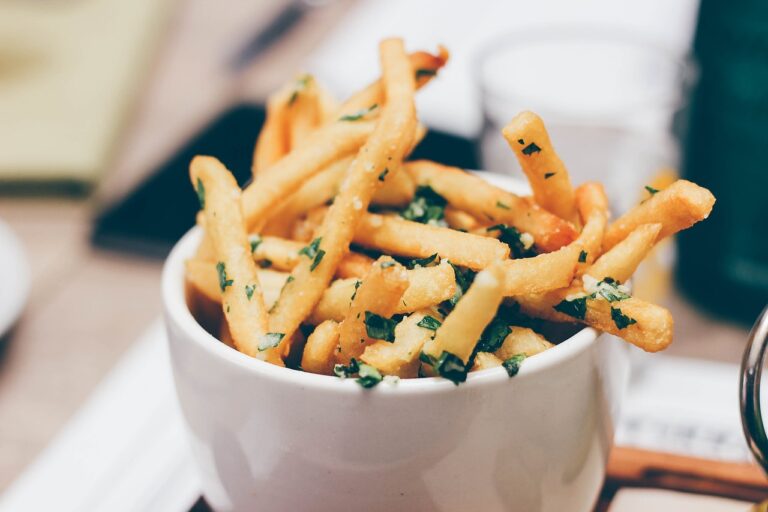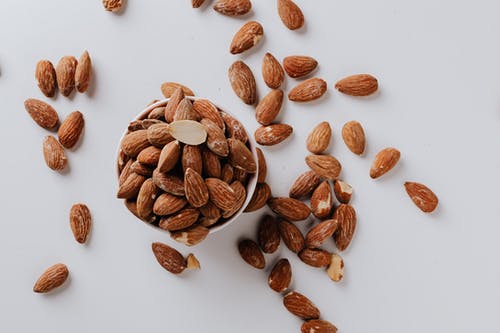How to Grow Vegetables Indoors? | The Ultimate Guide
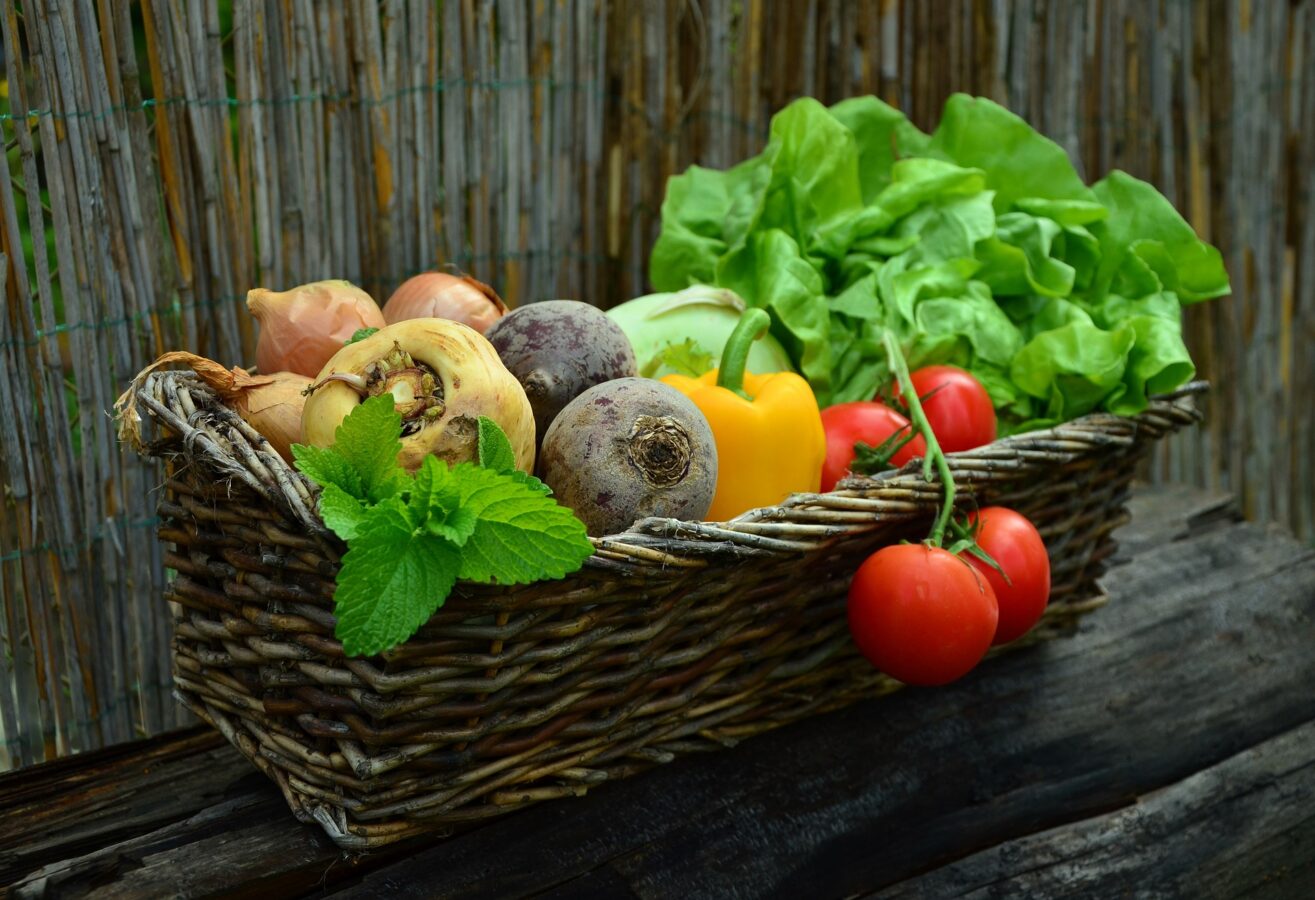
Indoor gardening has become increasingly popular in recent years, and it’s easy to see why. Not only does it allow you to bring a touch of greenery into your home, but it also provides a fun and rewarding hobby that can be enjoyed year-round. Therefore, in this article, we would like to explain to you how to grow vegetables indoors.
Contents
Foods you can grow Indoors
Herbs:
Herbs like basil, parsley, cilantro, and mint are just a few of the many herbs that can be grown indoors. They require minimal space and can be used to add flavor to a wide variety of dishes.
How to grow parsley indoors
Growing parsley indoors is relatively easy and requires only a few things. Here’s a step-by-step guide on how to grow parsley indoors:
- Choose a pot that’s at least 6 inches deep and has drainage holes. Parsley prefers well-draining soil, so it’s essential to choose a pot with drainage holes to prevent waterlogging.
- Fill the pot with a good quality potting soil mixed with some perlite to improve drainage.
- Soak parsley seeds in water for a few hours before planting to help speed up germination.
- Sow parsley seeds on the soil surface, spacing them about 2 inches apart.
- Lightly cover the seeds with soil, but don’t bury them too deep as parsley seeds need light to germinate.
- Water the soil thoroughly, but don’t overwater it. Parsley likes consistently moist soil, but too much water can lead to root rot.
- Place the pot in a sunny location, such as a south-facing window. Parsley needs at least 6 hours of sunlight each day to grow well.
- Keep the soil moist by watering it regularly, but don’t let the soil dry out completely between waterings.
- After the parsley seedlings have grown to about 3 inches tall, thin them out so that there is one plant per pot or space them 6-8 inches apart if planting in a larger container.
- Harvest parsley by cutting the outer leaves from the plant as needed. Be sure to leave some leaves behind so that the plant can continue to grow.
By following these steps, you can grow parsley indoors and enjoy its fresh taste in your cooking year-round.
Microgreens:
These tiny, nutrient-packed plants are easy to grow indoors and can be harvested in as little as 7-14 days. Some popular microgreens include arugula, radish, and broccoli.
How to grow broccoli indoors?
Growing broccoli indoors can be a bit challenging because it requires a lot of light and space to grow. However, it’s possible to grow broccoli indoors with the right conditions. Here’s a step-by-step guide on how to grow broccoli indoors:
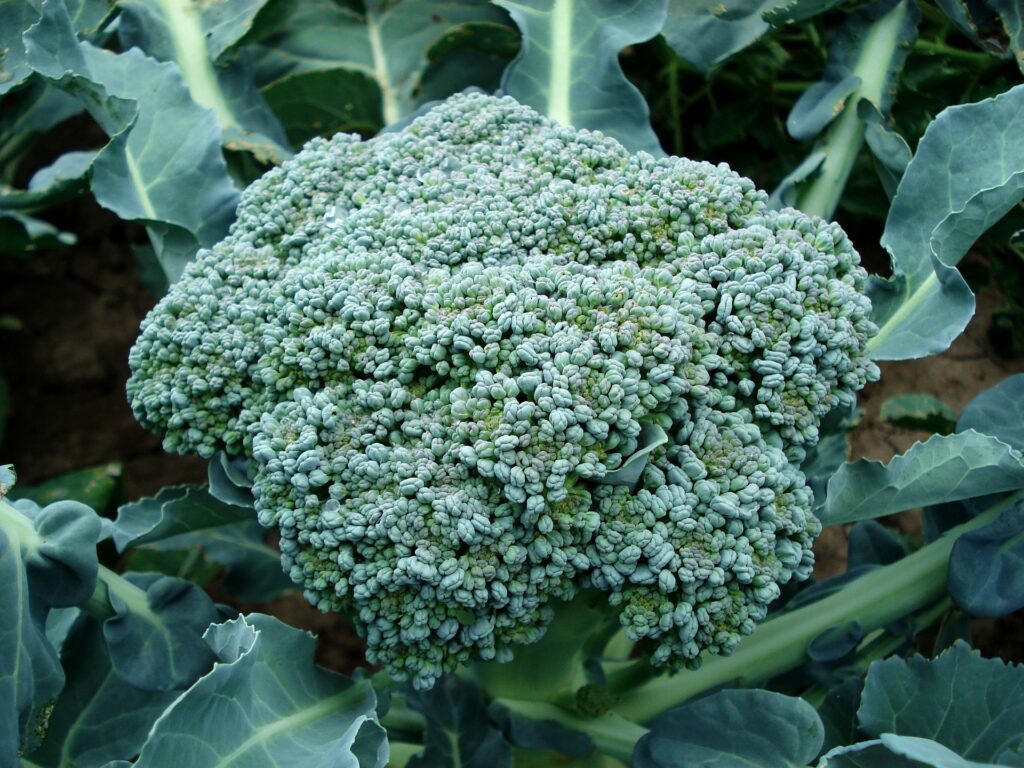
- Choose a large pot that’s at least 12 inches deep and has drainage holes. Broccoli needs plenty of room to grow, so it’s essential to choose a pot with enough space for the plant’s root system.
- Fill the pot with a good quality potting soil mixed with some compost to provide nutrients for the plant.
- Sow broccoli seeds about 1/4 inch deep in the soil and cover them with a thin layer of soil.
- Water the soil thoroughly, but don’t overwater it. Broccoli likes consistently moist soil, but too much water can lead to root rot.
- Place the pot in a sunny location, such as a south-facing window or under grow lights. Broccoli needs at least 6 hours of sunlight each day to grow well.
- Keep the soil moist by watering it regularly, but don’t let the soil dry out completely between waterings.
- When the seedlings have grown to about 2 inches tall, thin them out so that there is one plant per pot.
- Fertilize the broccoli plant every two weeks with a balanced fertilizer that’s high in nitrogen.
- Monitor the plant for pests such as aphids and caterpillars and treat them as needed with an organic pesticide.
- Harvest broccoli when the heads are firm and tight, and the buds are still green. Cut the heads with a sharp knife, leaving a few inches of stem attached to the plant.
By following these steps, you can grow broccoli indoors and enjoy its fresh taste in your cooking year-round. However, keep in mind that indoor-grown broccoli may not produce as large of a yield as outdoor-grown broccoli, but it’s still a fun and rewarding experience.
Leafy greens:
Spinach, lettuce, and kale are all great options for indoor growing. They require plenty of light and regular watering, but can be harvested multiple times throughout the growing season.
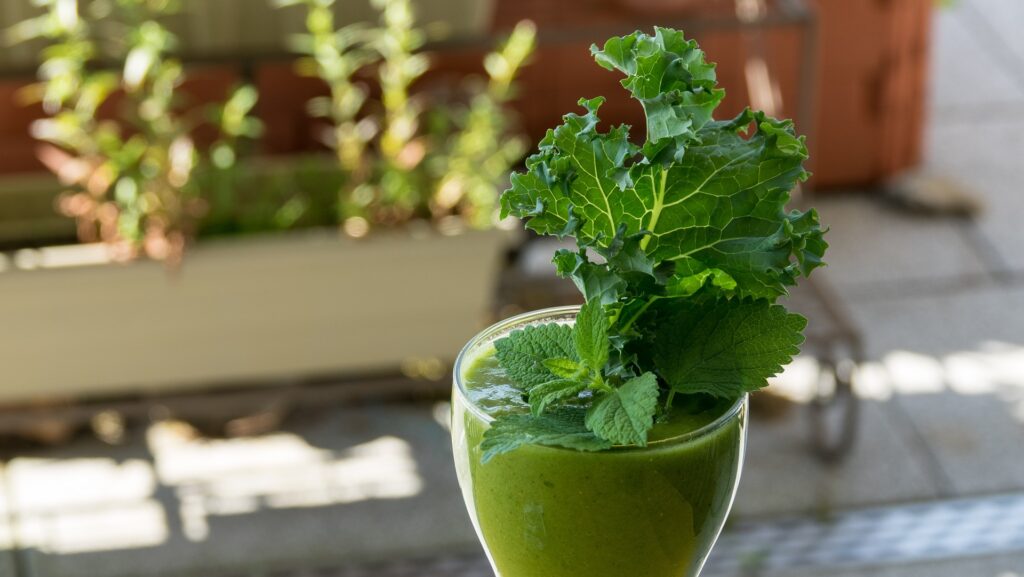
Tomatoes
While larger tomato plants may be more difficult to grow indoors, cherry and grape tomato varieties can thrive in containers with plenty of sunlight and proper ventilation.
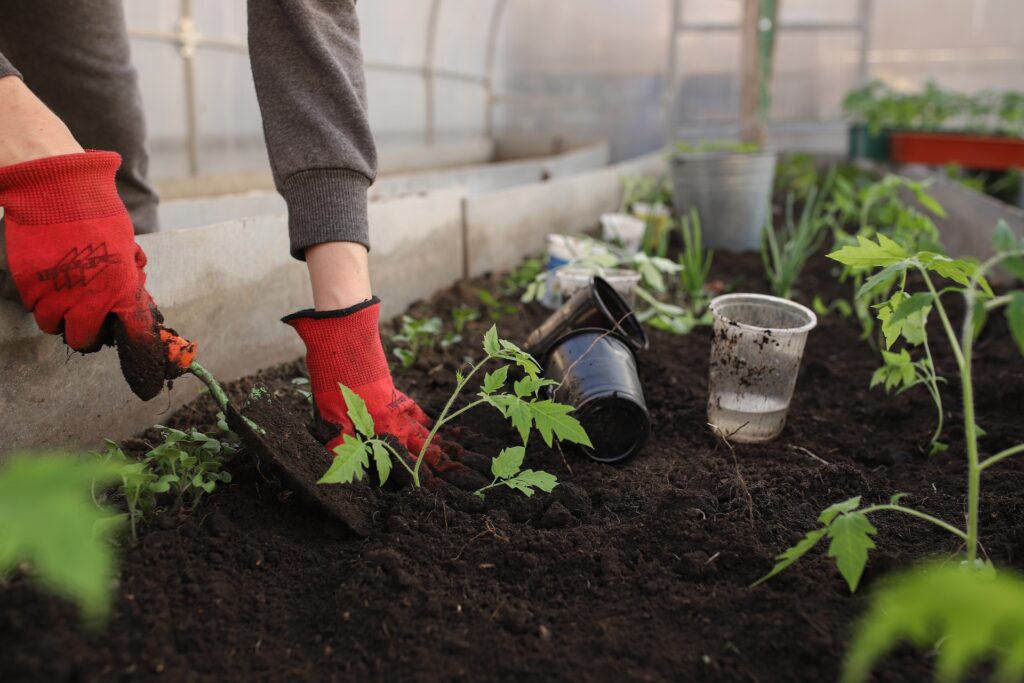
How to grow tomatoes indoors?
Growing tomatoes indoors can be challenging, but it’s possible with the right conditions. Here’s a step-by-step guide on how to grow tomatoes indoors:
- Choose a large pot that’s at least 12 inches deep and has drainage holes. Tomato plants need plenty of room to grow, so it’s essential to choose a pot with enough space for the plant’s root system.
- Fill the pot with a good quality potting soil mixed with some compost to provide nutrients for the plant.
- Choose a determinate tomato variety that is suitable for growing indoors, such as cherry tomatoes or patio tomatoes.
- Sow tomato seeds about 1/4 inch deep in the soil and cover them with a thin layer of soil.
- Water the soil thoroughly, but don’t overwater it. Tomatoes like consistently moist soil, but too much water can lead to root rot.
- Place the pot in a sunny location, such as a south-facing window or under grow lights. Tomatoes need at least 6 hours of direct sunlight each day to grow well.
- Support the tomato plant with a stake or trellis as it grows. Tomato plants can become top-heavy, and supporting them will prevent the stem from breaking.
- Fertilize the tomato plant every two weeks with a balanced fertilizer that’s high in phosphorus and potassium.
- Monitor the plant for pests such as spider mites and aphids and treat them as needed with an organic pesticide.
- When the tomato plant flowers, gently shake it to help with pollination.
- Harvest tomatoes when they are fully ripe and have a deep, even color. Ripe tomatoes will easily come off the vine when gently pulled.
By following these steps, you can grow tomatoes indoors and enjoy their fresh taste in your cooking year-round. Keep in mind that indoor-grown tomatoes may not produce as large of a yield as outdoor-grown tomatoes, but it’s still a fun and rewarding experience.
Peppers
Growing peppers indoors can be a fun and rewarding experience, and it’s relatively easy with the right conditions. Here’s a step-by-step guide on how to grow peppers indoors:
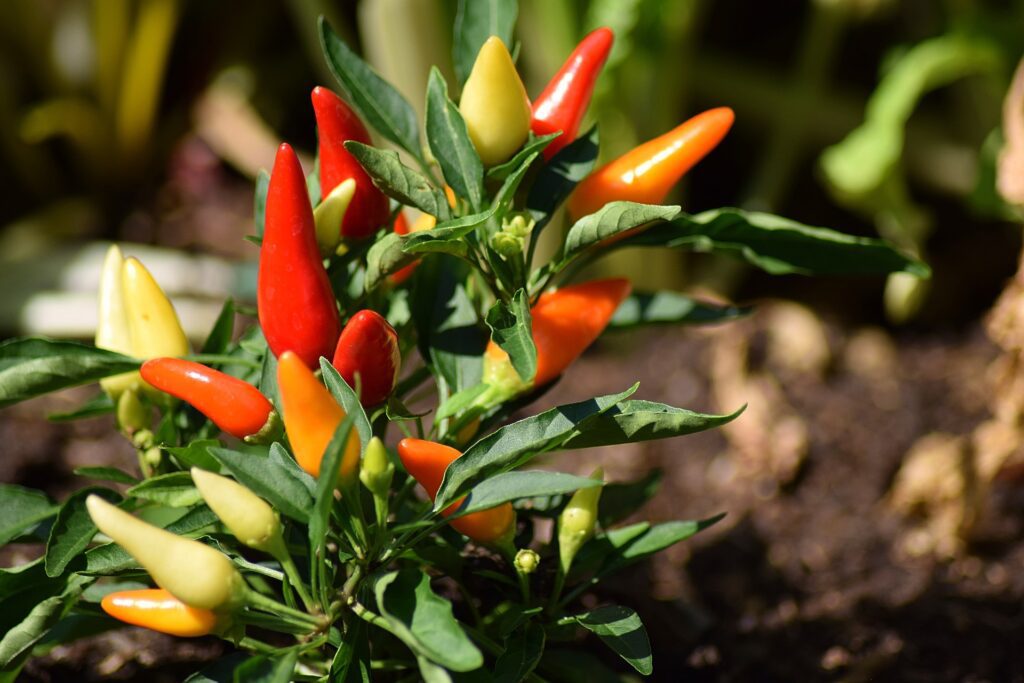
How to grow peppers indoors?
- Choose a large pot that’s at least 12 inches deep and has drainage holes. Pepper plants need plenty of room to grow, so it’s essential to choose a pot with enough space for the plant’s root system.
- Fill the pot with a good quality potting soil mixed with some compost to provide nutrients for the plant.
- Choose a pepper variety that is suitable for growing indoors, such as bell peppers, jalapeno peppers, or habanero peppers.
- Sow pepper seeds about 1/4 inch deep in the soil and cover them with a thin layer of soil.
- Water the soil thoroughly, but don’t overwater it. Peppers like consistently moist soil, but too much water can lead to root rot.
- Place the pot in a sunny location, such as a south-facing window or under grow lights. Peppers need at least 6 hours of direct sunlight each day to grow well.
- Support the pepper plant with a stake or trellis as it grows. Pepper plants can become top-heavy, and supporting them will prevent the stem from breaking.
- Fertilize the pepper plant every two weeks with a balanced fertilizer that’s high in phosphorus and potassium.
- Monitor the plant for pests such as spider mites and aphids and treat them as needed with an organic pesticide.
- When the pepper plant flowers, gently shake it to help with pollination.
- Harvest peppers when they are fully ripe and have a deep, even color. Ripe peppers will easily come off the plant when gently pulled.
By following these steps, you can grow peppers indoors and enjoy their fresh taste in your cooking year-round. Keep in mind that indoor-grown peppers may not produce as large of a yield as outdoor-grown peppers, but it’s still a fun and rewarding experience.
Bell peppers, jalapenos, and other hot pepper varieties can be grown indoors in containers with good drainage and plenty of sunlight.
Mushrooms
Mushroom growing kits are readily available and provide an easy way to grow delicious and nutritious mushrooms indoors.
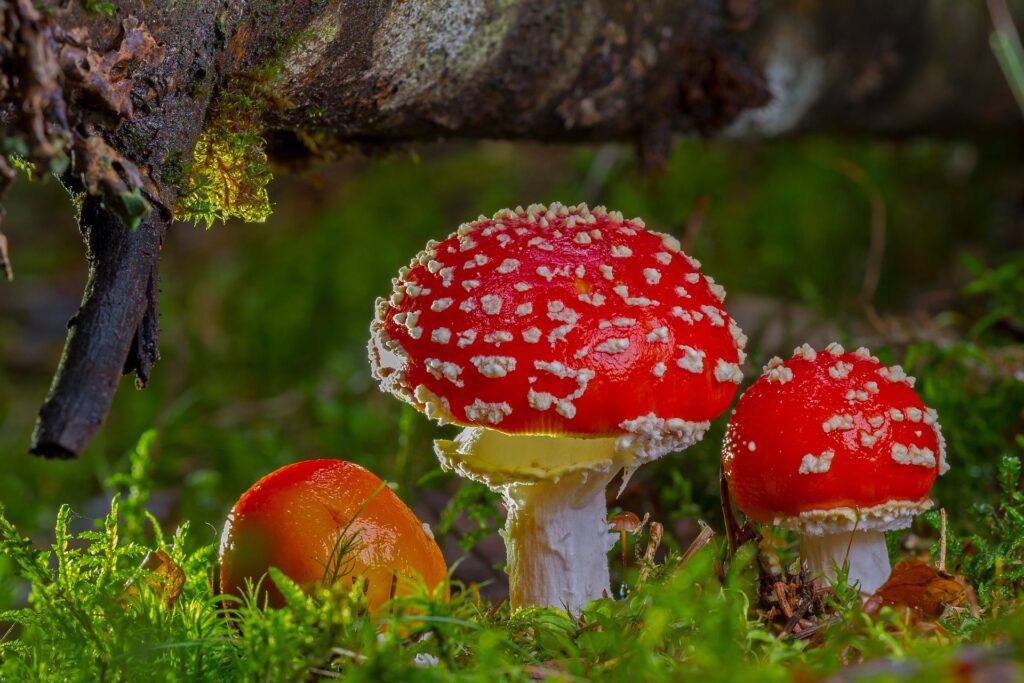
How to grow mushrooms indoors?
Growing mushrooms indoors is a fun and rewarding project, but it does require some specialized equipment and a bit of know-how. Here’s a general guide on how to grow mushrooms indoors:
- Choose a mushroom variety to grow. Some common varieties for indoor cultivation include oyster mushrooms, shiitake mushrooms, and button mushrooms.
- Obtain mushroom spawn, which is a type of mushroom “seed” that you will use to grow your mushrooms. You can purchase spawn online or from a gardening store.
- Fill a container, such as a plastic tub or grow bag, with a substrate that will serve as the growing medium for your mushrooms. Different types of mushrooms grow on different substrates, so be sure to choose one that is appropriate for the variety you want to grow. Some common substrates include sawdust, straw, and coffee grounds.
- Mix the mushroom spawn with the substrate according to the instructions that came with the spawn.
- Cover the container with a lid or plastic wrap to create a humid environment, which is essential for mushroom growth.
- Place the container in a cool, dark location with a temperature between 60-70°F (15-21°C). This could be a basement or closet.
- Mist the substrate regularly to keep it moist, but be careful not to overwater it.
- After a few weeks, small mushroom caps will begin to appear. Continue to mist the substrate regularly and monitor the temperature and humidity levels.
- Harvest the mushrooms when they are fully grown but before the caps begin to flatten out.
Growing mushrooms indoors can be a fun and rewarding project, but it does require some specialized equipment and knowledge. Consider doing some additional research on the specific variety of mushroom you want to grow and any unique requirements it may have.
Growing your own food indoors is not only a great way to enjoy fresh produce year-round, but it’s also a fun and rewarding hobby that can be enjoyed by gardeners of all skill levels.
Indoor gardening is perfect for those who live in apartments or homes without access to outdoor space, as it allows you to grow a wide variety of plants in even the smallest of spaces. From herbs and vegetables to flowers and succulents, the options are endless.
One of the great benefits of indoor gardening is that it can help to improve the air quality in your home. Plants are natural air purifiers, absorbing harmful pollutants and producing oxygen in the process. They also add humidity to the air, which can be beneficial during the dry winter months.
Getting started with indoor gardening is easy, and there are many resources available to help you along the way. From books and online tutorials to local gardening clubs, there’s no shortage of information and support for those looking to cultivate their green thumb.
So whether you’re a seasoned gardener or just starting out, indoor gardening is a fun and rewarding way to bring a bit of nature into your home and enjoy the many benefits that come with it.
How to Grow Vegetables Indoors?
Check out my blog or my vegan and vegetarian recipes:
- Is Zac Efron vegan?
- Is Jenna Ortega vegan?
- Are Crayola Makers vegan?
- How to start a vegetarian diet? | The Ultimate Beginner’s Guide
- Are vegan Doc Martens waterproof?
- Why do vegetarians fart more?
- How do vegetarians get amino acids?
- How do vegans deal with pests?
- Is E120 vegan?
- Are vegetarian sausages healthy?
- Are Skittles halal?
- Is Marmite vegetarian?
- Are marshmallows vegan?
- Is vegan meat halal?
- Where do Hindus worship?
- Is vegan meat processed?
- What is vegan wine?
- Are pregnancy tests vegan?

